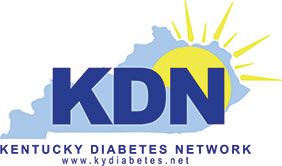UNDERSTAND YOUR MEDICATION PLAN
Since prediabetes and diabetes can affect different parts of your body, it is not uncommon for you to need several medications that work together to get you into your target range. Ask your provider and diabetes care and education specialist if you are still on the best medications based on the newest research. New medications often have multiple benefits, such as preventing heart-related problems, in addition to improving your blood glucose (sugar).
3 THINGS TO SHARE ABOUT YOUR MEDICATIONS WITH
YOUR PROVIDER
- Any side effects you are having.
- If you have stopped taking any of your medications.
- If the medication is affecting your quality of life
CHECK IF YOUR MEDICATION PLAN IS WORKING
There are several ways to measure if your diabetes medication plan is working. One way is to check an A1C level. It is important to know that the A1C doesn’t show how many times you have had low or high readings, so you may need to maintain a blood glucose log. If you use a continuous glucose monitor, you and your diabetes care and education specialist have access to a measure called Time in Range that will show how often your levels have been up or down. Ask your diabetes care team where your numbers are compared to your target range.
FOLLOW THESE 4 TIPS
- Keep an updated list of all your current medications
A medication list provides valuable information for your healthcare team. Be sure to include the name, dose and time you take each one. - Include all prescription and over-the-counter medications on your list, including herbal remedies, supplements and vitamin products.
- Fill your prescription immediately after your appointment.
- Work with your pharmacist to find affordable medication options, send refill reminders and streamline the timing of refills. If you don’t understand or forget what the medication
is for, ask your pharmacist when picking them up.
- Take your medication at the right time.
- Create a daily routine for taking and tracking your medications.
- Find the best times to take your medications so they will work best for you. Ask your diabetes care team about the time of day, spacing between doses, pairing medication times with your daily schedule and grouping medications that may be taken together.
- Share your medication beliefs and concerns with your diabetes care and education specialist or another member of your care team.
- Did taking your medicine have positive effects on your health?
- Did your medicine cause low blood glucose (hypoglycemia)?
- Are you concerned about the number of pills you must take every day?
- Is your medication plan too complicated for your lifestyle?
Taking medications helps lower the risk for heart attack, stroke and kidney damage by managing blood glucose, blood pressure and cholesterol levels in your body. Diabetes is a progressive disease so the longer you have diabetes, the more help you will need from medications to keep you and your heart, eyes and kidneys healthy.
Diabetes care and education specialists, like pharmacists, nurses and dietitians can be a great resource when it comes to understanding your medication plan. They can help you find assistance programs if needed, as well as work with you to address any concerns you may have. Ask your provider to refer you. You deserve it!
Questions to Ask About New Medications:
- What is the name of the medication?
- What is it for and how does it work?
- How much should I take?
- When should I take it, and should I take it with food
- What side effects or problems should I let you know about?
- Will it affect my weight?
- Could the medication cause my glucose to
drop too low? - If I miss a dose, what should I do?
- How do I store the medication at home and when I travel?
- How will I know it’s the right medication for me and if it is working?
Word Wall
- Target Range: This is the range of blood glucose, blood pressure, or cholesterol, for example, that is optimal for good health. It is determined based on evidence and consultation with expert health professionals and researchers. Your target range is set to match your situation.
- A1C: This is a blood test that shows your average blood glucose for the past 3 months.
- Time in Range: This is the percent of time your
glucose readings are between 70 mg/dl and 180 mg/dl and is usually reported on a continuous glucose monitoring report. These numbers represent
the highest and lowest your glucose levels can be
before they become a concern. - Hypoglycemia: This is the name for low blood glucose. It happens when your blood glucose goes below 70 mg/dl. Typical symptoms include being shaky, sweaty, nervous and/or weak.
